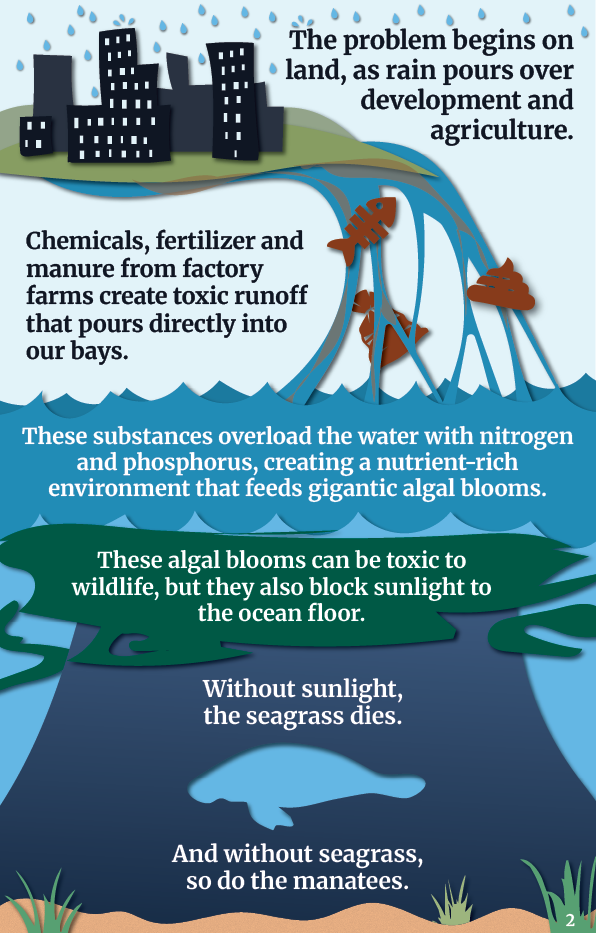

John,
Manatees are wasting away.
The lush sanctuaries where these gentle "sea cows" once thrived are transforming into underwater deserts, leaving manatees to starve as they dig desperately through the sand for seagrass, their main food source.
Some manatees have even been found dead with sand in their stomachs -- because there's just no seagrass to be found.1
But how did this happen? And what can we do to stop it?

The impacts of this cycle can be devastating. In Indian River Lagoon, where manatees once ate their fill in rich green meadows of seagrass, algal blooms carpeted the water's surface, and 58% of the lagoon's seagrass died as a result, leaving those manatees desperate and famished.3
Like so many of our biggest environmental challenges, the best way to tackle this problem is at the source.
If we're going to save the manatees before they're gone for good, we have to start on dry land by reducing our use of chemicals and fertilizers that cause this problem, and holding polluters accountable for contributing to this nitrogen-rich runoff.
Thank you,
Lisa Frank
Executive Director
P.S. We're not giving up on the manatees. Environment America holds polluters accountable, advocating for vulnerable wildlife, including manatees. Will you make all of our work possible by donating today?
1. Sam Anderson, "Animal Podcast; Episode 3: Manatees," New York Times, June 5, 2024.
2. Zachary T. Sampson, "Wasting Away," Tampa Bay Times, April 2, 2025.
3. Gisele Galoustian, "Unique seagrass nursery aims to help Florida's starving manatees," Science Daily, February 8, 2022.
Your donation will be used to support all of our campaigns to protect the environment, from saving the bees and protecting public lands, to standing up for clean water and fighting climate change. None of our work would be possible without supporters like you.
Environment America, Inc.
1543 Wazee Street, Suite 410, Denver, CO 80202, (303) 801-0581
Member Questions or Requests: 1-800-401-6511
Facebook | Twitter | Instagram

If you want us to stop sending you email then follow this link -- Unsubscribe.